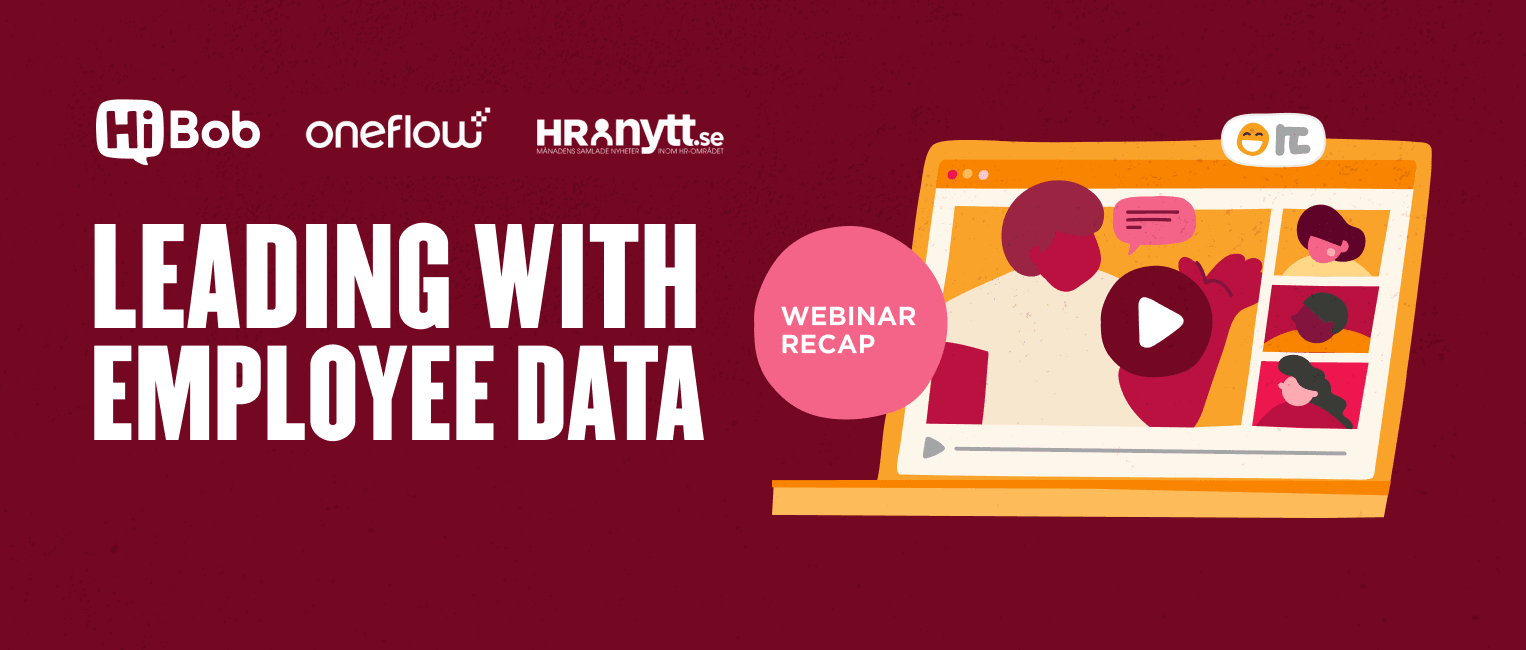In the modern working world, the role of HR has developed and transcended from its original role of focusing on administrative tasks and people management.
HR professionals are now embracing a more strategic position within their companies, leveraging people data to help drive organizational success and create harmonious, modern, and people-centric company cultures.
We hosted a recent webinar in partnership with Oneflow that shed light on this transformation, offering valuable insights into the strategic use of people data in HR. We heard from the following panel of HR leaders who highlighted the critical role of people analytics in modern HR practices:
- Ling Koay, Chief Brand Officer, Oneflow
- Anna Carlsson, HR Tech Analyst and Expert within HR Digitalization
- Rami Tzafrir, Senior Director of Talent Organization and Learning, HiBob
- Lisa Skinner Källström, Chief HR Officer, Teamtailor
The need for data-driven HR
The technological shift and changing workforce dynamics within HR have required leaders to adopt actionable, data-driven, and unbiased HR strategies.
A major factor for this shift was the COVID-19 pandemic in 2020. As Rami explained:
“COVID really brought HR to the forefront. It was when things started to really change and HR finally got a place at the table. I remember at the time I was in an 80,000-plus employee company and COVID was scary for us because our business continuity plan wasn’t prepared for it…everyone was suddenly looking to HR to provide them with the answers.”
This transformational shift put a closer focus on company culture and working practices. And now, HR teams must leverage people data to make informed decisions that align with both what their people want and their organizational objectives.
Understanding HR metrics that matter
It’s critical to fully understand the importance of identifying the specific KPIs within your people data that align with your organizational goals. As Anna noted:
“Every organization is different. So deciding what types of data to collect and what HR KPIs to measure is based on what challenge you need to solve. It’s about concentrating on the strategic focus and not limiting yourself in what types of data to collect. You have to instead think: ‘Okay, this is our challenge. So what data points would we need to be able to find the underlying problem in this?’”
Through the use of analytics, HR can move beyond basic reporting to uncover insights that drive strategic decision-making and demonstrate the value of HR initiatives in achieving business objectives and shaping a modern organizational culture and environment.
The methods behind the data
Data collection is never a one-size-fits-all process. It’s something that’s unique to each organization. It depends on your specific challenges, how your people work, and what your overall objectives are.
One critical piece of advice from the experts is to avoid overcomplication. The process of gathering data should feel natural and integrated into your existing workflows.
“It’s important not to overdo it. Be sure to gather data where it feels normal to share this data. It has to be part of a process,” says Anna. “The worst thing is to try to get everyone to fill in a lot of details…because in many cases when you start your digitalization journey, you end up changing the behavior of people and how they do their work. So it’s about doing that as smoothly as possible and looking at how the activity is going to be perceived by the employee or the manager. So be sensitive and take it step by step and don’t overdo it.”
It’s also important to note that engagement plays a key role in the data collection process. Whether that’s through surveys, interaction with digital tools, training sessions, or other means, the value exchange between an organization and its people is crucial.
And of course, people are far more likely to willingly contribute valuable data when they can see the direct positive benefits of their participation—whether that’s improved workplace processes or enhanced learning opportunities.
Recommended For Further Reading
The role of data for leaders
Support from organizational leaders is crucial for the successful implementation of data-driven HR practices. When leadership roles champion the use of people analytics in HR, it helps showcase the importance of data in decision-making and fostering a culture that appreciates the value of data.
“I believe that if data isn’t made public and democratized, it won’t have an impact,” says Rami. “So when managers have direct access to data, it becomes much more powerful. It also puts the onus on them to act upon it. So I think leaders are a critical link in this chain.”
Engaging leaders in the process helps to ensure a smooth integration of HR data into the strategic planning and decision-making of an organization.
Moving forward with strategic HR data
Embracing HR analytics isn’t just about adopting new technologies—it’s about transforming HR into a strategic partner that drives organizational growth and success while creating a positive, people-centric work environment for your team.
By understanding and applying the principles discussed by our panel of experts, HR professionals can lead the way in leveraging people data to shape the future of work.
This article is based on the presentation “Leading with employee data: A guide to strategic HR.” Watch the full webinar to learn how you can utilize HR data in your organization.


